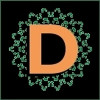Abstract
This article investigates the literary trope of disgust used in Clive Barker’s most obvious representation of the child predator as depicted in his first horror novel The Damnation Game . Damnation presents the predator as a fantastic intrusion into the realm of reality, a walking dead figure whose bodily contaminants seep into the moral realm. In this form, the fantastic spills into literary reality, juxtaposing and conflating the two world views. The predator plays a subtle but significant role in this narrative. Unbeknownst to himself, Anthony Breer is a reanimated corpse, a monsterisation that inscribes moral and physical decay onto the body. Embedded within this representation are suppositions about the motivating factors that drive his literal appetite for schoolgirls, whom he abducts, murders, and displays in monstrously domestic scenes as part of his private and cannibalistic ritual. Breer creates a vacant child of the dead, which allows for the projection of his desires for acceptance and assimilation into normative society. Filth serves as a limiting factor, reducing both the identity of the child and the child predator and creating a self-fulfilling prophecy of their relation. Yet, it is the emergence of the child's subjectivity, an acknowledgement of complexity and uniqueness, that frees the child and the child predator.
How to Cite:
Kristjanson, G., (2013) “The Predator Disgusts: Intrusion Fantasy and the Decay of Innocence”, Dandelion: Postgraduate Arts Journal and Research Network 4(1). doi: https://doi.org/10.16995/ddl.273

